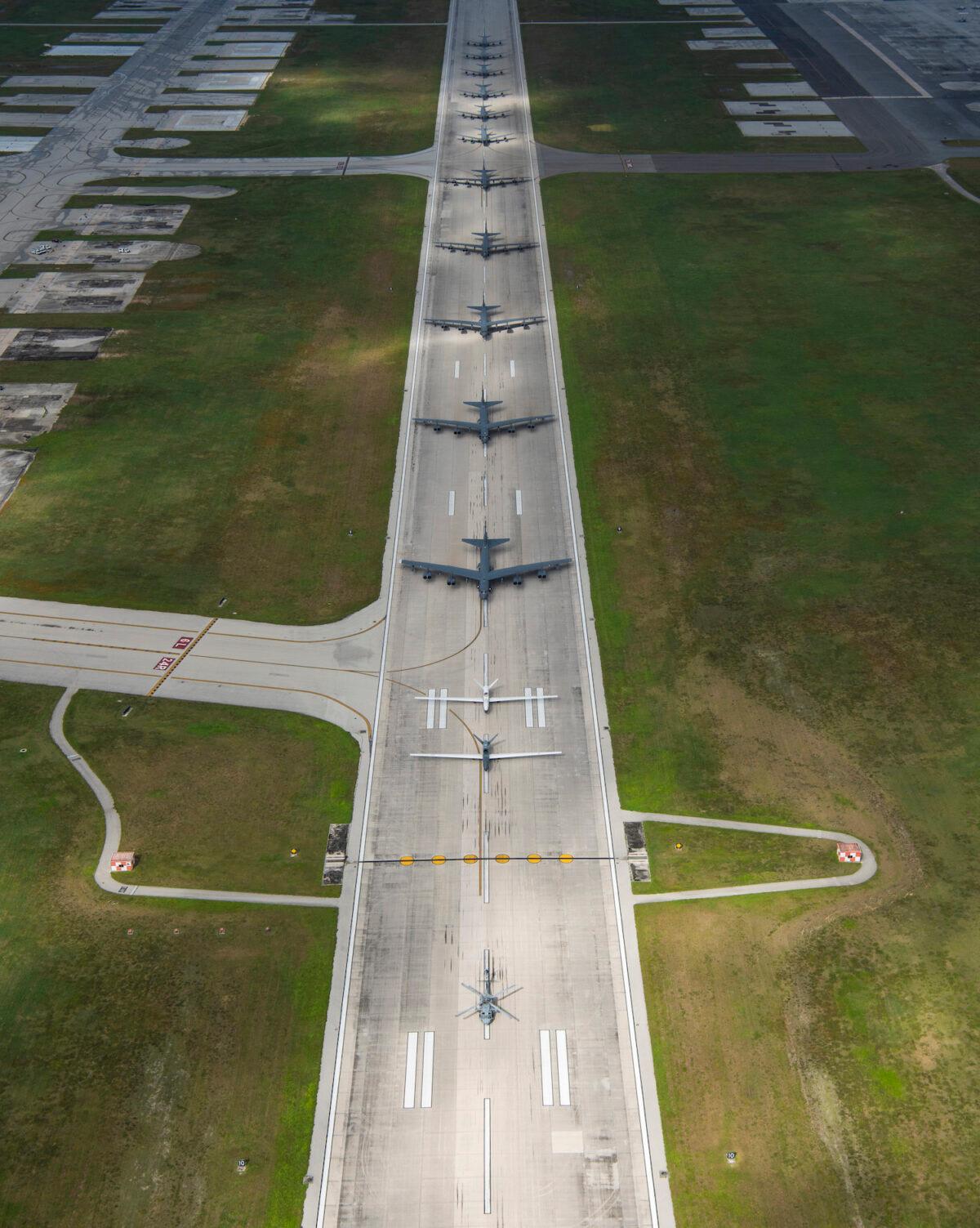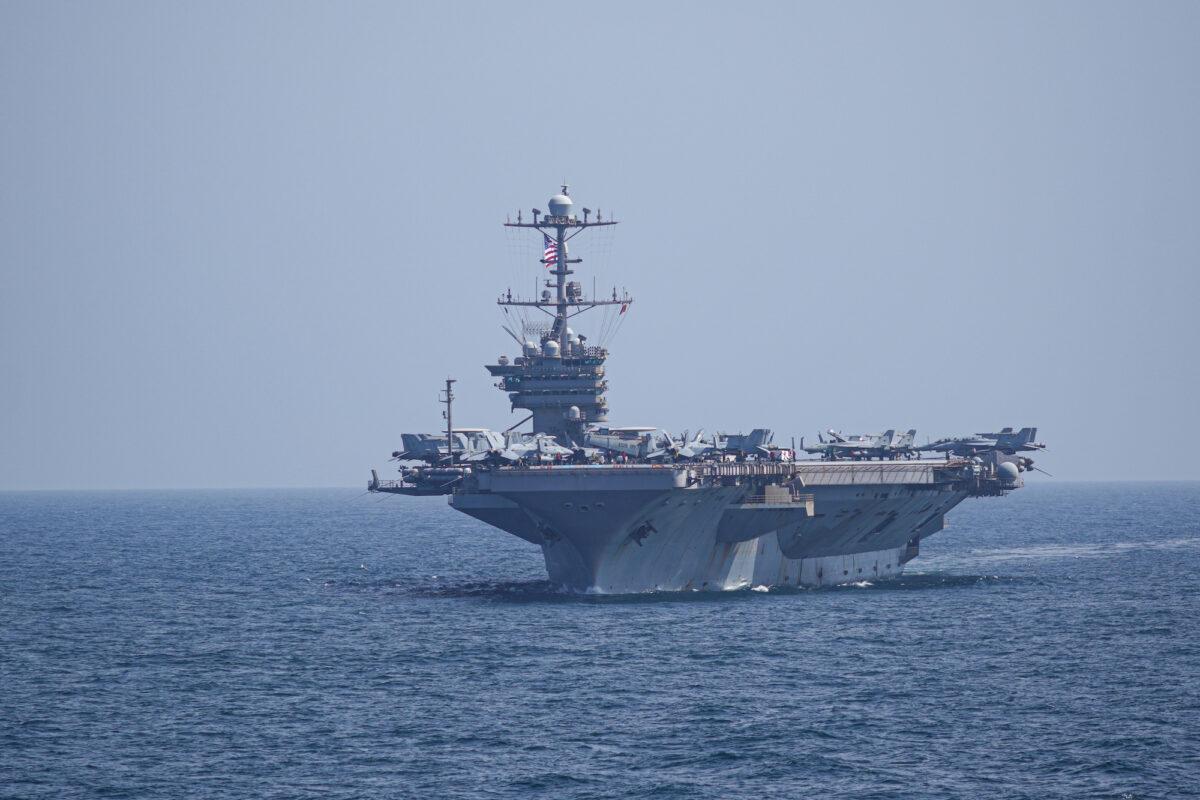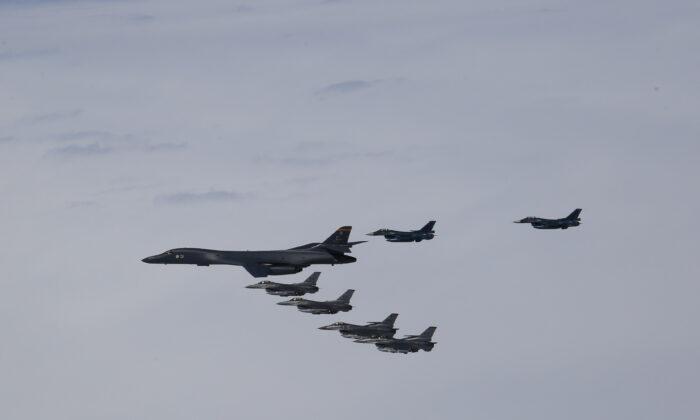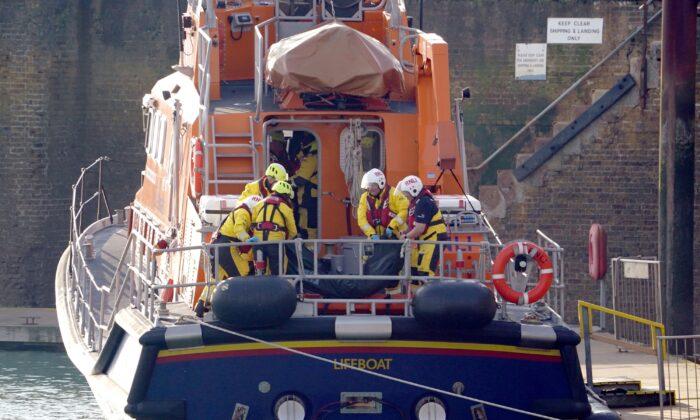Last week, for the first time in 16 years, the U.S. Air Force left the key strategic Pacific island of Guam with no heavy bombers.
The vanishing act wasn’t a sign of weakness, but a new trick that the Pentagon is practicing to keep adversaries on their toes: dynamic force employment.
A few days later, a U.S. B-1 bomber was in the Pacific on a 30-hour round trip from North Dakota to Japan, precisely to showcase the new strategy at work.
“This operation showcases our unwavering commitment to the security and stability of the Indo-Pacific region through the employment of strategic forces from around the globe,” said Gen. C.Q. Brown Jr., Pacific Air Forces and INDOPACOM Air Component commander.
“From confronting invisible threats of a global pandemic to addressing military aggression and coercive activities, we remain a lethal, innovative, and interoperable force focused on a shared vision of upholding a free and open lndo-Pacific.”

The Navy and Army have also been experimenting with a similar strategic shift.
The aim is to avoid the predictability of fixed rotations or of permanent presence, stretching the same forces further, and keeping adversaries off balance. The strategy isn’t easy, however, as it requires higher levels of readiness overall, which brings a higher cost.
In 2018, for the first time in a decade, the Arabian Gulf was left without an aircraft carrier strike group, as the USS Harry Truman sailed to the Arctic Circle—the first carrier to patrol there since the Cold War.

This was the Navy’s first taste of dynamic deployment.
“U.S. allies and adversaries know that U.S. forces will be deployed overseas and will respond quickly if there’s a crisis. But day-to-day, they won’t know whether U.S. force deployments are going to happen.”
The Army’s deployments to Europe and the Pacific Pathways are also linked to dynamic force concepts.
National Defense Strategy aims to pivot the military away from counterinsurgency to primarily focus on modernizing and adapting to pushing back on China’s newfound military muscle.
Chinese military spending has increased around tenfold over the past two decades, with the Communist Party building up the largest arsenal of long-range missiles in the world–precisely to hold U.S. aircraft at bay.
The intermediate-range D-26 missile—fielded while the United States was still bound by the Intermediate-Range Nuclear Forces Treaty—was even dubbed “the Guam killer” because of its potential to reach the U.S. island territory, a key strategic position in the western Pacific.
Dynamic force deployment doesn’t mean that bombers won’t return to Guam, just that they will no longer be a permanent feature for China’s military strategists to rely on.





